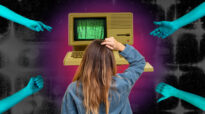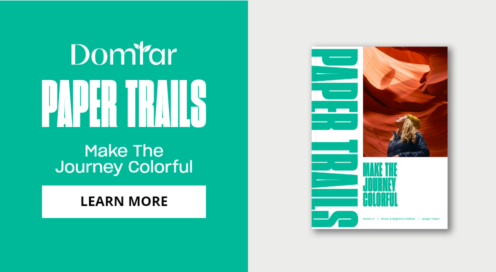AI & Design
Written by Stephanie Strawbridge RGD, Gov of Nova Scotia, John Furneaux RGD, Eric Forest RGD, ericforest.ca, Raymond Cheah RGD and Ian Chalmers RGD, Pivot Design Group Inc
While Artificial Intelligence has the potential to vastly change design and business processes, leading designers agree that it is no substitute for human creativity. Read how they think the role of designers will evolve with AI.
"Generative AI, such as ChatGPT and Midjourney, is rapidly transforming the way we conceptualize ideas, process thoughts and generate outputs. While some fear that AI will hinder human creativity, I see it as a tool that liberates us from mundane tasks, allowing more time for thinking, creating and exploring — just like past innovations such as the internet and smartphones. As humans, we play a vital role in guiding and teaching AI. As designers, we have the power to shape the future of AI by applying a human-centered, empathetic approach to influence the interaction with AI models and create joyful, human-friendly experiences."
—Miki Arai, Design Leader in AI Strategy, Deloitte
"AI will not replace designers, but designers who use AI will outperform those who don't. To stay ahead of the evolving service marketplace, designers must learn and adapt to AI knowledge and skills. Although AI can generate ideas through patterns and data, it lacks the creativity and intuition to produce truly imaginative designs. As human designers, we need to take our empathy and creative abilities to another level while harnessing the power of AI tools' power to simplify our tasks and day-to-day tactical work. AI will transform the design industry by creating more content more quickly, boosting our design work and giving us more time for research, experimentation and iteration."
—Ian Chalmers RGD, Principal & Creative Director at Pivot Design Group
"While the integration of AI-powered design tools to a designer tool kit is not a new phenomenon, with the recent advancement of AI technology and machine learning the implication and debate on how to use the technology responsibly has come into the forefront in our industry. Although AI may be efficient at coming up with multiple concepts quickly, the results themselves run the risk of infringing and plagiarizing existing intellectual property because the original sources come from online datasets and the algorithms incorporated are unknown. AI has the potential to significantly impact the future of our industry especially when the over reliance on AI solutions starts to supersede our own creativity."
—Raymond Cheah RGD, Independent Art Director & Graphic Designer
"Great designers do unprompted things — calling printers and developers to predict deployment issues, building stakeholder buy-in, finding which paper stock feels just right for a particular restaurant’s menu, etc. For all of its prompt responses, AI has no unprompted questions. It can neither perceive nor manipulate the human vinculum that binds our industry and connects designs to the market. A great designer in the age of AI will be the one who perceives those bonds and pours coherence into them."
—Eric Forest RGD, Independent Graphic Designer & Professor, Humber College
AI will greatly transform how graphic designers work and even what they work on — but this evolution is nothing new. The graphic “artists” of the first eight decades of the 20th century might recognize the output of what graphic designers do today, but the process in which we achieve that work would be completely foreign to them. The rise of AI-driven programs means that many of the skills and tasks that we spent years perfecting will be made redundant. However, original creative thinking (not decorating) will remain the most important thing that a designer has to offer."
—John Furneaux RGD, Principal at B3 Strategy
"AI presents an interesting dichotomy between augmentation vs. automation. Currently, most AI powered tools are not here to replace people but to augment their workflow and help complete tasks better or faster by saving time or effort spent. Designers should stay curious and explore ways of leveraging AI tools to augment their process yet remain mindful that the AI is only as good as the data it is trained on and still susceptible to errors and biases. As AI technology matures, the field of design will evolve accordingly (similar to the shift from analog letterpress to digital content) giving rise to new skills and roles around training AI models, creative prompts and a much stronger emphasis on designing for inclusion and ethical considerations. Design at its core is a human-centric discipline, that requires highly intuitive skills that can't be replaced"
—Farwa Kazmi, Director of Product Design in AI & Founder at Explorux
"Make no mistake AI will disrupt the way we create and craft work. It will drastically reduce the number of “craft people” required and further commoditize the creation of imagery and radically accelerate the rate at which copycat work is produced. AI might be capable of a vastly superior number of computations, knowledge and skills, but it can’t be human. It might have read every book, poem and email ever written, but it has never been in love, or lost a loved one or hugged someone in the middle of the night. Our humanity is the one thing that is uniquely ours and that cannot be substituted."
—Barry Quinn RGD, Founder & Chief Creative at Quake
"AI undoubtedly offers compelling benefits — rapid-scaling computational power can track user engagement, dynamic visual configurations can support accessibility standards — with less manual tasks, designers can focus on creative strategy. However, like with any technology, we must regulate ethical use, privacy and ownership. Algorithms for reinforcement learning must be refined by human feedback. Otherwise, it could lead to unexamined biases in automated workings of society. In essence, designers must articulate the vision and govern the framework. AI is for decision support, not judgment substitution. Although AI boasts unequivocal advantages for our industry, I believe imagination is still our greatest tool."
—Stephanie Strawbridge RGD, Communication Designer at Government of Nova Scotia
"AI applications can work for or against us as graphic designers in business, especially for big rush jobs. It can shorten the creative process and mental labour by half, helping us to view creative alternatives faster. But it is also highly susceptible to replicate and infringe upon a designer’s copyright. Anyone can instruct AI to replicate the style of a particular designer and create many versions of that design style. How should the industry monitor this? While AI may aide some design processes, it can never replace creative problem-solving skills in real time and replace that empathetic human connection."
—Grace Visconti RGD, Independent Graphic Designer

Stephanie Strawbridge RGD
Gov of Nova Scotia
John Furneaux RGD
John Furneaux RGD is the Managing Director for the Toronto office of PS&Co Brand Studio, working with good organizations, to unify brand, people and purpose. For over 30 years, John has worked closely with organizations of all sizes — from entrepreneurial start-ups to global leaders. His award-winning experience spans a broad range of brand image and identity programs, as well as the communications and marketing initiatives that bring brands to life. John also teaches at George Brown College in their Design Management Program. He is a Past President of RGD and is an active speaker and contributor in the design industry.

Eric Forest RGD
ericforest.ca

Ian Chalmers RGD
Pivot Design Group Inc
Ian Chalmers is a design entrepreneur and principal of Pivot Design Group, an experienced design agency in Toronto. He’s also the driving force behind DesignMeets. This event platform promotes the sharing of information, ideas, and different points of view on critical design topics, and a founder of ARCTRN Group, an experimental initiative exploring the process of uncovering human stories and insights in data. With more than 25 years of experience in design and design research, Ian is acknowledged as a business leader, mentor, creative director, and solutions provider across Canada’s business landscape and in the academic community. His recent project work has focused on the healthcare vertical, applying people-centric design solutions for researchers, scientists, physicians, and institutions. Through DesignMeets, he has explored the relationship between design and topics such as climate change, artificial intelligence, and the circular economy. Ian is also a committed community member. He serves on the board of Pencils for Kids, a charity that provides scholarships, farming programs, and sewing programs for girls in a small community in Nigér, West Africa. He’s a former member of the Board of Directors of the Association of Registered Graphic Designers (RGD) and teaches service design at the George Brown School of Design. He is a graduate of the Design & Visual Communications Program at OCAD University.
















